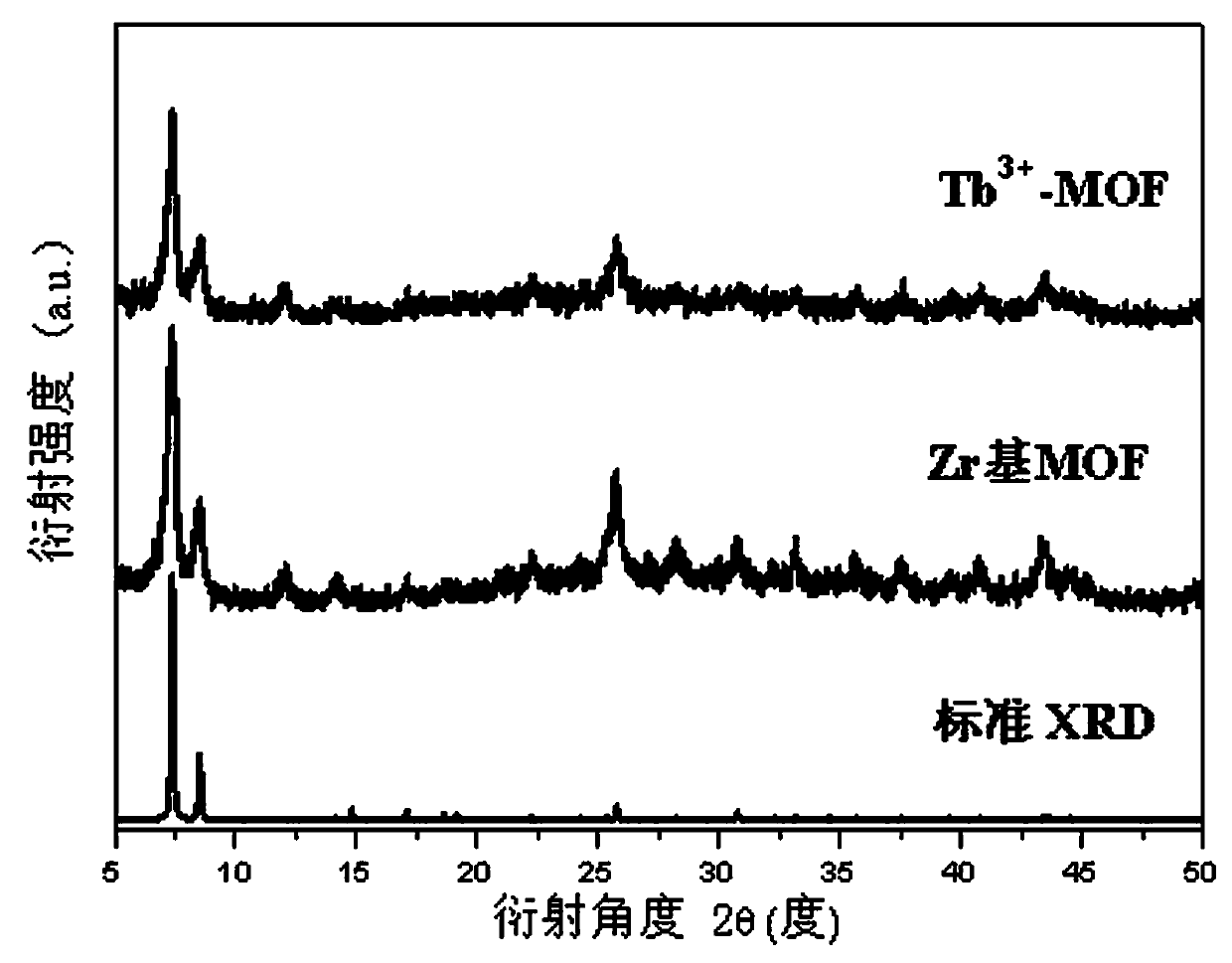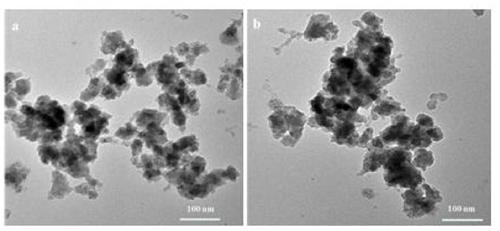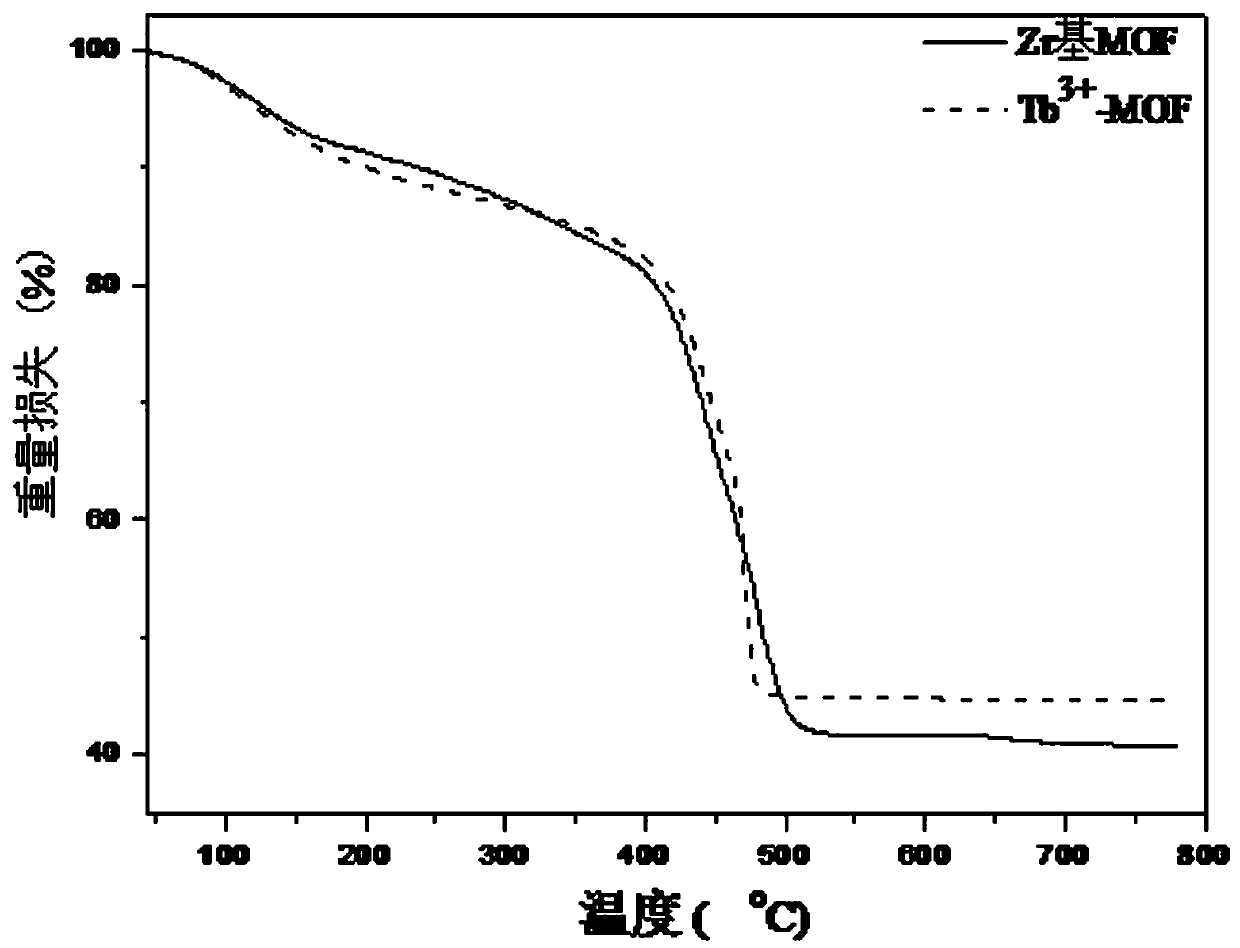Preparation method of material for detecting content of dopamine in human body
A technology for detecting materials and dopamine, applied in analytical materials, luminescent materials, material excitation analysis, etc., can solve the problems of expensive instruments, unfavorable discovery of patients, etc., and achieve the effect of low detection limit, excellent fluorescence performance, and good water resistance.
- Summary
- Abstract
- Description
- Claims
- Application Information
AI Technical Summary
Problems solved by technology
Method used
Image
Examples
Embodiment 1
[0036] Embodiment 1: Preparation example of Zr-based MOF material.
[0037] This embodiment provides a Zr-based MOF material, the chemical composition of the MOF material is: Zr 6 o 4 (OH) 4 (O 2 C-C 6 h 2 -CO2 (CO 2 h) 2 )·xH 2 O.
[0038] The preparation method of described Zr-based MOF material comprises the steps:
[0039] ZrCl 4 (0.2330g), 1,2,4,5-benzenetetracarboxylic acid (H 4 btec, 0.4321g) and H 2 The mixture of O (5 mL) was stirred into a 25 mL round bottom flask at room temperature, then heated to reflux at 100 °C for 24 hours, centrifuged to obtain a white powder product, which was washed several times with distilled water. To remove organic matter encapsulated in the pores, the product was dispersed in distilled water (about 10 mL per 1 g of product) and heated under reflux for 16 hours. Then, the solid was recovered by centrifugation, washed with ethanol, and dried under vacuum at 60 °C to obtain the final product in 50% yield.
[0040] The obtaine...
Embodiment 2
[0041] Example 2: Tb 3+ -Preparation example of MOF material.
[0042] This example provides a post-utilization synthesis preparation method for obtaining Tb 3+ -MOF material, its specific preparation process is as follows:
[0043] By mixing 100mg of the Zr-based MOF material prepared in Example 1 and TbCl 3 (0.001M) was dispersed in 10mL ethanol at 30°C for 24h to prepare Tb 3+ -MOF materials. Excess Tb was removed by centrifugation and washed several times with ethanol 3+ Afterwards, the obtained white product was vacuum-dried at 60°C for 8 hours to obtain Tb 3+ -MOF materials.
[0044] For the obtained Tb 3+ -MOF materials were characterized by powder X-ray (PXRD) pattern and thermogravimetric (TG) analysis. figure 1 The PXRD pattern of the obtained sample is given, compared with the crystal structure pattern of the Zr-based MOF material, the synthesized Tb 3+ -MOF materials do not undergo changes in crystal structure, indicating that doping with lanthanide elemen...
Embodiment 3
[0045] Embodiment 3: Experimental embodiment of fluorescence sensing.
[0046] This embodiment uses the prepared Tb in embodiment 2 3+ -MOF material for fluorescence sensing experiments, the specific experimental process is as follows:
[0047] 3 mg of Tb 3+ -MOF materials were respectively soaked in plasma (KCl, NaCl, CaCl 2 , MgCl 2 , urea, 1-proline, glucose, NaHCO 3 , DA) and urine (urea, creatinine, KCl, NaCl, DA) chemical substances, after the suspension is formed by ultrasound, the fluorescence spectrum of each suspension is measured.
[0048] The samples prepared in Example 2 were tested for fluorescence spectrum. Figure 6 Recorded Tb 3+ -Characteristic emission spectra of MOFs. Figure 7 The luminescence spectra of mixed suspensions of various substances are given, and it can be seen from the figure that only DA causes a strong fluorescence quenching effect. Figure 8 The fluorescence spectrum of adding DA under the condition of the coexistence of these subst...
PUM
 Login to View More
Login to View More Abstract
Description
Claims
Application Information
 Login to View More
Login to View More - R&D
- Intellectual Property
- Life Sciences
- Materials
- Tech Scout
- Unparalleled Data Quality
- Higher Quality Content
- 60% Fewer Hallucinations
Browse by: Latest US Patents, China's latest patents, Technical Efficacy Thesaurus, Application Domain, Technology Topic, Popular Technical Reports.
© 2025 PatSnap. All rights reserved.Legal|Privacy policy|Modern Slavery Act Transparency Statement|Sitemap|About US| Contact US: help@patsnap.com



